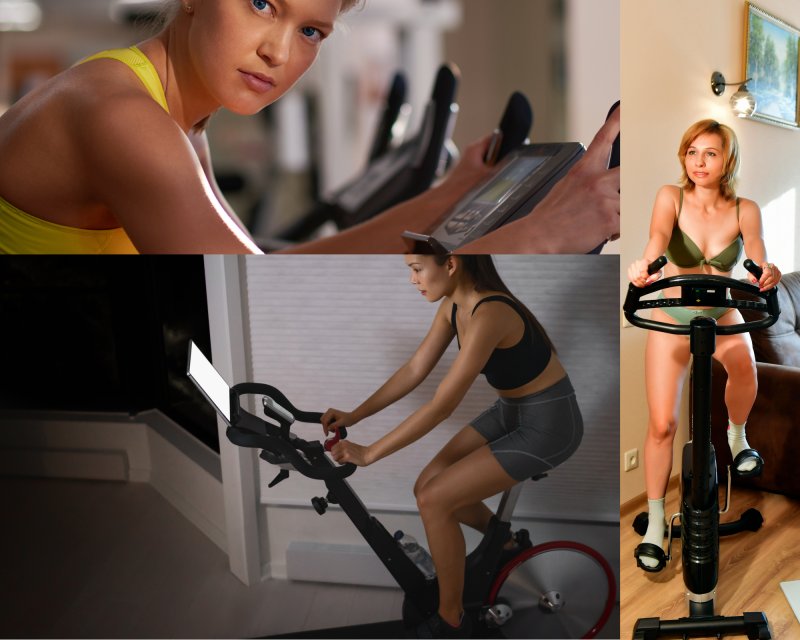Introduction
Tired of skipping workouts because of bad weather or packed schedules? Want to torch calories, boost your mood, and get in shape without leaving the house? Welcome to the world of indoor cycling—a high-energy, low-impact workout that fits into any lifestyle. Whether you’re a fitness junkie or a beginner just looking to get moving, indoor cycling could be your game-changer.
Let’s dive into why this powerhouse of a workout is winning hearts (and trimming waistlines) across the globe.

What Is Indoor Cycling?
Indoor cycling involves using a stationary bike, also called a spin bike or exercise bike, to simulate outdoor cycling. The ride may be virtual, guided by an instructor, or totally self-paced.
It blends intense cardio with rhythm and resistance, offering a heart-pounding, calorie-burning workout from the comfort of your living room.
Types of Indoor Bikes
1. Upright Bikes
These mimic the feel of a regular outdoor bike and are great for cardio and moderate strength work.
2. Spin Bikes
Favored for high-intensity workouts, they have a weighted flywheel for smooth pedaling and are ideal for interval training.
3. Recumbent Bikes
Comfort-focused, with a reclined seat and back support—perfect for seniors or those with back issues.
4. Smart Bikes
High-tech options with Bluetooth, touchscreen displays, and app integration for guided classes and progress tracking.
Full-Body Benefits of Indoor Cycling
Cardiovascular Health
Indoor cycling is a fantastic aerobic workout. It gets your heart rate up, strengthens the heart and lungs, and reduces the risk of cardiovascular disease.
Calorie Burn and Fat Loss
A 45-minute spin session can burn 400–600 calories, depending on intensity. Combined with a healthy diet, it’s a fast track to weight loss.
Toned Legs, Glutes, and Core
Cycling targets your quads, hamstrings, calves, and glutes. Add resistance and you’ll also fire up your core muscles.
Low-Impact and Joint-Friendly
It’s easy on the knees and joints, making it an excellent choice for injury prevention and recovery.
Mental Health Boost
Mood Enhancement
Cycling releases endorphins that elevate mood and fight off stress, anxiety, and depression.
Focus and Energy
Even short 20-minute rides can increase mental clarity and energy, especially helpful for working from home.
Indoor Cycling vs. Other Cardio Machines
Treadmill vs. Bike
Treadmills are high-impact and focus mainly on the lower body. Bikes are low-impact, safer for joints, and easier to stick with long term.
Elliptical vs. Bike
Ellipticals work both the upper and lower body, but cycling often burns more calories and is easier to maintain rhythm.
Rowing Machine vs. Bike
Rowing offers full-body resistance but requires more space and technique. Bikes are simpler and more accessible to most people.
How to Get Started with Indoor Cycling
Pick the Right Bike for You
Start with a bike that matches your fitness level and goals. Smart bikes offer coaching; spin bikes are great for power workouts.
Set Up Your Space
Choose a spot with good airflow, a non-slip mat, and access to water and a towel. A good playlist or cycling app can elevate your experience.
Learn Proper Form
-
Posture: Straight back, relaxed shoulders
-
Grip: Light hold on handlebars
-
Pedal Stroke: Smooth, controlled motion
-
Seat Height: Level with your hip when standing next to the bike
Building Your Cycling Routine
Beginner Plan
-
Day 1: 15 mins light ride
-
Day 2: Rest or walk
-
Day 3: 20 mins with intervals
-
Day 4: Rest
-
Day 5: 25 mins steady pace
-
Day 6: Short hills (add resistance)
-
Day 7: Rest
Intermediate to Advanced Plan
-
Mix in HIIT (30s sprint, 90s recovery), climb drills, and long rides (45+ minutes) 3–5 days per week.
Indoor Cycling and Weight Loss
How It Helps You Slim Down
Indoor cycling revs up your metabolism and builds lean muscle, helping you burn fat long after your workout ends.
Nutrition Tips for Better Results
-
Eat a balanced meal with carbs and protein post-ride
-
Stay hydrated before, during, and after workouts
-
Avoid sugar-loaded drinks—stick to water or electrolyte mixes
Popular Indoor Cycling Apps and Platforms
1. Peloton
Offers on-demand and live classes with world-class instructors.
2. Zwift
Gamifies cycling with virtual races and scenic rides.
3. iFIT
Works with various bikes and provides global rides and studio workouts.
4. Apple Fitness+ / YouTube
Budget-friendly or free alternatives with high-quality guided sessions.
Accessories to Enhance Your Ride
-
Cycling shoes (clip-in for efficiency)
-
Padded shorts for comfort
-
Heart rate monitor for tracking intensity
-
Tablet or screen holder to follow classes or watch videos
-
Fan to keep cool
Avoiding Common Mistakes
Skipping the Warm-Up
Always ease into your ride with 5 minutes of gentle pedaling.
Bad Form
Slouching or pushing too hard with your knees can lead to injury. Adjust your bike and check your posture.
Overtraining
Rest days are just as important. Don’t push every session to the max—balance intensity with recovery.
Real-Life Transformations
From dramatic weight loss stories to improved mental clarity and endurance, indoor cycling has transformed thousands of lives. Many users report increased energy, better moods, and even lower blood pressure after just a few weeks of consistent riding.
Expert Advice
Fitness coaches recommend cycling for its mix of fun, intensity, and adaptability. Doctors often suggest it for people managing chronic conditions, injuries, or looking to start low-impact workouts.
Conclusion
Indoor cycling is more than a trendy workout—it’s a total game-changer for your health, fitness, and mindset. Whether you’re looking to shed pounds, tone up, boost your cardio, or just feel better every day, hopping on a stationary bike is one of the most effective ways to do it.
All you need is the bike, a little time, and the will to start. Ready to ride?
FAQs
1. How many calories does a 30-minute indoor cycling session burn?
Anywhere from 300 to 500 calories, depending on your intensity and body weight.
2. Is indoor cycling good for beginners?
Absolutely! It’s low-impact, scalable, and easy to learn.
3. How often should I cycle indoors to see results?
Aim for 3–5 times per week for noticeable fitness and weight loss improvements.
4. Can I build leg muscle with cycling?
Yes, especially if you include resistance drills like climbs and sprints.
5. Do I need a smart bike to get started?
Nope. A basic spin or upright bike works just fine. You can always upgrade later!
